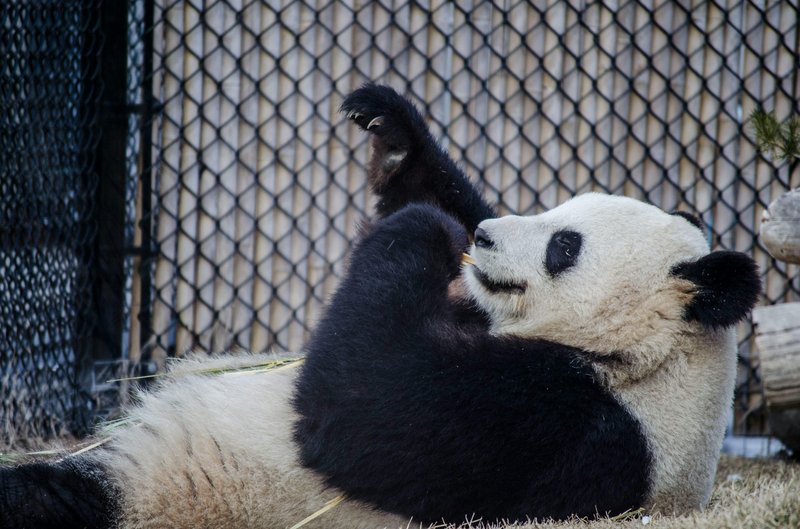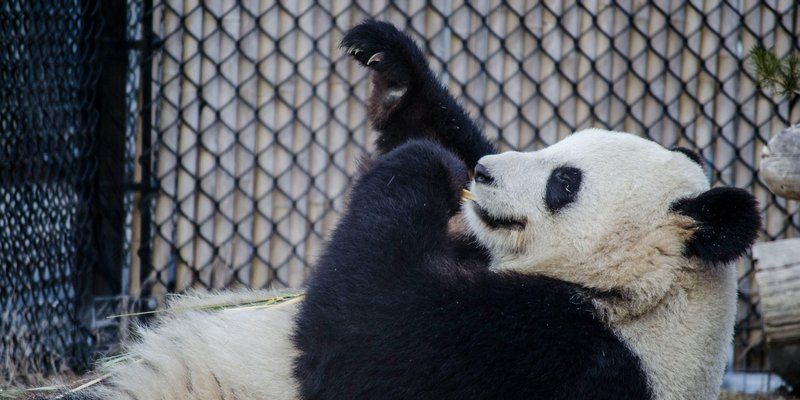
Pandas aren’t just cuddly; they’re fascinating creatures with unique behaviors and an interesting history. From their diets to their conservation status, every fact about pandas reveals something new and surprising. Let’s dive into some of the most intriguing details about these lovable bears, exploring their quirks and the challenges they face in the wild.
1. Pandas Are Technically Bears
Here’s the thing: while they might look different from the bears we usually think of, giant pandas are classified as bears. They belong to the Ursidae family, which includes species like grizzlies and polar bears. What’s interesting is that their scientific name, *Ailuropoda melanoleuca*, translates to “black and white cat-foot,” referring to their distinct color pattern and the unique shape of their paws.
These furry giants can weigh up to 300 pounds and can grow to about five feet tall. Can you imagine that? A bear that’s mostly black and white and loves to munch on bamboo! They’ve got some pretty cool adaptations too, like strong jaws and teeth that help them crush tough bamboo stalks—just one of the reasons why pandas are so unique.
2. Bamboo Is Their Main Diet
You might be wondering, “What do pandas eat, anyway?” The answer is primarily bamboo! In fact, up to 99% of a panda’s diet consists of this plant. While they are technically omnivores and could eat meat, they’ve pretty much turned their back on that aspect of their diet. Instead, they feast on bamboo, munching away for about 10-16 hours each day.
Bamboo is low in nutrients, so pandas need to consume a lot to meet their energy needs. They can eat anywhere from 26 to 84 pounds of bamboo daily. That’s like consuming an entire grocery bag of salad every day just to feel full! It’s fascinating how their bodies are specially designed to thrive on this particular plant.
3. They Have Unique Social Behaviors
Interestingly, pandas are mostly solitary creatures. While they don’t mind the company of others during the breeding season, they generally prefer to keep to themselves. You might think of them as introverts of the animal kingdom. Each panda has its own territory, which they mark with scent to let other pandas know they’ve been around.
But here’s the twist: young pandas are more playful and curious. They spend a lot of time climbing trees and exploring, sometimes even trying to play with other animals. It’s adorable to watch these fluffy balls of energy tumble and roll around, showcasing their playful side!
4. Pandas Are Masters of Camouflage
Did you know that pandas have a unique way of staying hidden? Their black and white fur helps them blend into their surroundings. In the dark forests of China, their bold colors can disguise them among the shadows and dappled sunlight. This clever adaptation helps them avoid predators and remain inconspicuous while they munch on their bamboo.
Moreover, when it snows, their white fur merges beautifully with the wintery landscape, making them almost invisible. It’s a nifty little survival tactic that many animals use in the wild, and pandas have mastered this skill in their own special way.
5. Giant Pandas Are Endangered
Unfortunately, giant pandas are classified as endangered. With fewer than 2,000 left in the wild, their population has been shrinking due to habitat loss and fragmentation. Deforestation and human encroachment have made it challenging for these bears to find enough bamboo. Conservation efforts are crucial to ensure that future generations get to experience these amazing animals.
Fortunately, many organizations and governments are working hard to conserve panda habitats. Protected reserves have been established, and breeding programs are in place to help increase their numbers. The more we learn about pandas, the better equipped we are to protect them.
6. They Have a Unique Mating Season
Panda courtship is a bit like a romantic comedy—but with more growling! Pandas have a very short mating season that usually lasts only a few days each year, typically from March to May. During this time, female pandas make a series of vocalizations to attract male suitors. It’s a bit like a dating app, but the stakes are much higher!
Once they mate, females have a gestation period of about five months, after which they usually give birth to one or two cubs. However, if she has twins, she typically only raises one, as it’s difficult to care for two at once. It’s a tough but fascinating part of their reproductive strategy.
7. Baby Pandas Are Incredibly Tiny
When most people think of baby animals, they picture something cute and cuddly. Baby pandas, called cubs, are born weighing only about 4-6 ounces—about the size of a cup of coffee! They are incredibly small compared to their mothers, who can weigh hundreds of pounds. These helpless little beings are born blind and rely entirely on their mothers for warmth and feeding.
As they grow, cubs begin to develop their iconic black-and-white coloring. Watching them grow is a delightful experience, as they play, explore, and discover the world around them. They might start off tiny and fragile, but soon they become some of the most adorable creatures on the planet!
8. Pandas Have a Special Thumb
You might think pandas have five fingers, but they actually have a sixth digit! This extra “thumb” isn’t really a thumb in the traditional sense; it’s an elongated wrist bone that helps them grasp bamboo. How cool is that? It’s like having a built-in tool for their favorite food.
This unique adaptation allows them to easily hold and manipulate bamboo stalks while eating. It’s fascinating how evolution has shaped these animals to thrive in their specific habitat. This extra digit plays a crucial role in their survival.
9. They Communicate in Unique Ways
Pandas don’t just use their vocalizations to attract mates; they have a whole range of sounds they use to communicate. From bleats and honks to growls and barks, pandas express their feelings through various vocalizations. Each sound has a different meaning, whether it’s a warning, an invitation to mate, or simply a way to announce their presence.
Additionally, they use scent marking to communicate with others. They have scent glands on their paws and faces that release pheromones, helping them convey their message to other pandas in the area. It’s like a fragrant social network!
10. They Symbolize Conservation Efforts
Pandas have become symbols of wildlife conservation worldwide. Their distinctive appearance and gentle demeanor make them perfect ambassadors for raising awareness about endangered species. Thanks to conservation efforts, the number of giant pandas in the wild is slowly increasing.
These lovable bears remind us of the importance of protecting our planet and its inhabitants. Every effort made to safeguard their habitats also helps countless other species. By caring for pandas, we contribute to a larger mission of preserving biodiversity and ensuring that future generations can enjoy the wonders of nature.
In closing, giant pandas are more than just cute faces—they’re fascinating creatures with unique behaviors and critical roles in their ecosystems. As you ponder these amazing facts, let’s remember the importance of conservation and protecting their habitats. After all, the world is a better place with these iconic bears roaming the wild.

